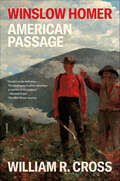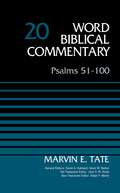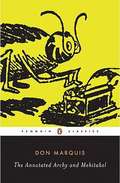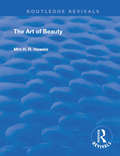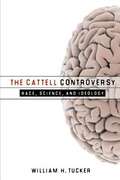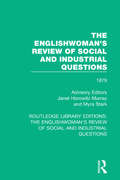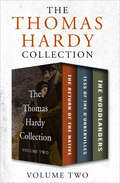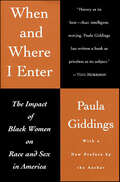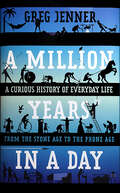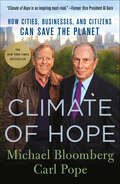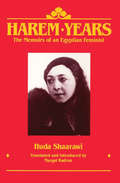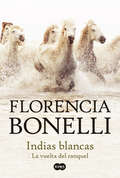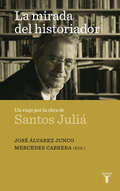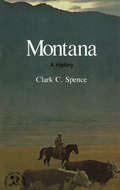- Table View
- List View
Taking Back the Academy!: History of Activism, History as Activism
by Jim Downs Jennifer ManionFirst published in 2004. Routledge is an imprint of Taylor & Francis, an informa company.
The Court of Queen's Bench of Manitoba, 1870-1950
by Dale BrawnThis study of the Manitoba judiciary is not only the first biographical history to examine an entire provincial bench, it is also one of the first studies to offer an internal view of the political nature of the judicial appointment process. Dale Brawn has penned the biographies of the first thirty-three men appointed to Manitoba's Court of Queen's Bench. The relative youth of Manitoba as a province and the small size of its legal profession makes possible an exceptionally detailed investigation of the background of those appointed to the province's highest trial court.The biographical data that Brawn has collected for this book highlights the extent to which judicial candidates underwent a socialization process designed to produce a legal elite whose members shared remarkably similar views and ways of thinking. In addition, these biographies suggest that until at least 1950, seats on provincial benches were rewards for political services rendered. Many lawyers became judges not because of their legal ability, but because they had made themselves known in the communities in which they practiced. This fascinating study offers an intimate look at personalities ranging from prime ministers to members of the bench and both senior levels of government.
The Lazier Murder
by Robert J. SharpeIn December 1883, Peter Lazier was shot in the heart during a bungled robbery at a Prince Edward County farmhouse. Three local men, pleading innocence from start to finish, were arrested and charged with his murder. Two of them -- Joseph Thomset and David Lowder -- were sentenced to death by a jury of local citizens the following May. Nevertheless, appalled community members believed at least one of them to be innocent -- even pleading with prime minister John A. Macdonald to spare them from the gallows.The Lazier Murder explores a community's response to a crime, as well as the realization that it may have contributed to a miscarriage of justice. Robert J. Sharpe reconstructs and contextualizes the case using archival and contemporary newspaper accounts. The Lazier Murder provides an insightful look at the changing pattern of criminal justice in nineteenth-century Canada, and the enduring problem of wrongful convictions.
The Night Land: A Love Tale (Dover Doomsday Classics)
by William Hope Hodgson"The Night Land is a tale of the remote future - billions of years after the death of the sun. It is one of the most potent pieces of macabre imagination ever written . . . there is a sense of cosmic alienage, breathless mystery, and terrified expectancy unrivalled in the whole range of literature . . . this fantasy of a night-black, dead planet, with the remains of the human race concentrated in a stupendously vast metal pyramid and besieged by monstrous, hybrid, and altogether unknown forces of darkness, is something that no reader can forget." - H. P. Lovecraft. The tale of a heroic search for life beyond the darkness, this groundbreaking 1912 story was the first work of modern fantasy to feature a dying Earth. The inspiration for countless science fiction, fantasy, and horror novels, the book's legions of fans included Clark Ashton Smith, who remarked that "In all literature, there are few works so sheerly remarkable, so purely creative, as The Night Land."
Winslow Homer: American Passage
by William R. CrossThe definitive life of the painter who forged American identity visually, in art and illustration, with an impact comparable to that of Walt Whitman and Mark Twain in poetry and prose—yet whose own story has remained largely untold.In 1860, at the age of twenty-four, Winslow Homer (1836–1910) sold Harper’s Weekly two dozen wood engravings, carved into boxwood blocks and transferred to metal plates to stamp on paper. One was a scene that Homer saw on a visit to Boston, his hometown. His illustration shows a crowd of abolitionists on the brink of eviction from a church; at their front is Frederick Douglass, declaring “the freedom of all mankind.” Homer, born into the Panic of 1837 and raised in the years before the Civil War, came of age in a nation in crisis. He created multivalent visual tales, both quintessentially American and quietly replete with narrative for and about people of all races and ages. Whether using pencil, watercolor, or, most famously, oil, Homer addressed the hopes and fears of his fellow Americans and invited his viewers into stories embedded with universal, timeless questions of purpose and meaning. Like his contemporaries Twain and Whitman, Homer captured the landscape of a rapidly changing country with an artist’s probing insight. His tale is one of America in all its complexity and contradiction, as he evolved and adapted to the restless spirit of invention transforming his world. In Winslow Homer: American Passage, William R. Cross reveals the man behind the art. It is the surprising story of a life led on the front lines of history. In that life, this Everyman made archetypal images of American culture, endowed with a force of moral urgency through which they speak to all people today.Includes Color Images and Maps
Psalms 51-100, Volume 20 (Word Biblical Commentary #Vol. 20)
by Ralph P. Martin David Allen Hubbard Glenn W. Barker John D. Watts Marvin TateThe Word Biblical Commentary delivers the best in biblical scholarship, from the leading scholars of our day who share a commitment to Scripture as divine revelation. This series emphasizes a thorough analysis of textual, linguistic, structural, and theological evidence. The result is judicious and balanced insight into the meanings of the text in the framework of biblical theology. These widely acclaimed commentaries serve as exceptional resources for the professional theologian and instructor, the seminary or university student, the working minister, and everyone concerned with building theological understanding from a solid base of biblical scholarship.Overview of Commentary OrganizationIntroduction—covers issues pertaining to the whole book, including context, date, authorship, composition, interpretive issues, purpose, and theology.Each section of the commentary includes:Pericope Bibliography—a helpful resource containing the most important works that pertain to each particular pericope.Translation—the author’s own translation of the biblical text, reflecting the end result of exegesis and attending to Hebrew and Greek idiomatic usage of words, phrases, and tenses, yet in reasonably good English.Notes—the author’s notes to the translation that address any textual variants, grammatical forms, syntactical constructions, basic meanings of words, and problems of translation.Form/Structure/Setting—a discussion of redaction, genre, sources, and tradition as they concern the origin of the pericope, its canonical form, and its relation to the biblical and extra-biblical contexts in order to illuminate the structure and character of the pericope. Rhetorical or compositional features important to understanding the passage are also introduced here.Comment—verse-by-verse interpretation of the text and dialogue with other interpreters, engaging with current opinion and scholarly research.Explanation—brings together all the results of the discussion in previous sections to expose the meaning and intention of the text at several levels: (1) within the context of the book itself; (2) its meaning in the OT or NT; (3) its place in the entire canon; (4) theological relevance to broader OT or NT issues.General Bibliography—occurring at the end of each volume, this extensive bibliographycontains all sources used anywhere in the commentary.
The Annotated Archy and Mehitabel
by Don MarquisGenerations of readers have delighted in the work of the great American humorist Don Marquis, who was frequently compared to Mark Twain. These free-verse poems, which first appeared in Marquis's New York newspaper columns, revolve around the escapades of Archy, the philosophical cockroach who was once a poet, and Mehitabel, a streetwise alley cat who was once Cleopatra. Reincarnated as the lowest creatures on the social scale, they prowl the rowdy streets of New York City in between the world wars. The antics of these two immortal characters are now made available for the first time in their original order of publication in this unique, comprehensive collection, which features many poems never before reprinted. First time in Penguin Classics Archy and Mehitabel is considered the inspiration for E. B. White's Charlotte's Web Features many new poems never reprinted since they were first published early in the twentieth century Introduction places Marquis in the context of American humor and the history of satire .
The Art of Beauty (Routledge Revivals)
by H. R. HaweisThis book was originaly published in 1878. The Culture of beauty is everywhere a legitimate art. But the beauty and adornment of the human form, the culture of personal beauty, is of the first interest and importance. This book explores the art of beauty, including chapters on the pleasure of beauty, the importance of dress, and the moralities of dress.
The Cattell Controversy: Race, Science, and Ideology
by William H. TuckerRaymond Cattell, the father of personality trait measurement, was one of the most influential psychologists in the twentieth century, with a professional career that spanned almost seventy years. In August 1997, the American Psychological Association announced that Cattell had been selected the recipient of the American Psychological Foundation Gold Medal Award for Life Achievement in Psychological Science. Then, only two days before the scheduled ceremony, the APF abruptly postponed the presentation of the award due to concerns involving Cattell's views on racial segregation and eugenics. In addition to his mainstream research, in his publications Cattell had also posited evolutionary progress as the ultimate goal of human existence and argued that scientific criteria should be used to distinguish "successful" from "failing" racial groups so that the latter might be gradually "phased out" by non-violent methods such as regulation of birth control. The Cattell Controversy discusses the controversy that arose within the field in response to the award's postponement, after which Cattell withdrew his name from consideration for the award but insisted that his position had been distorted by taking statements out of context. Reflecting on these events, William H. Tucker concludes with a discussion of the complex question of whether and how a scientist's ideological views should ever be a relevant factor in determining the value of his or her contributions to the field.
The Englishwoman's Review of Social and Industrial Questions: 1879 (Routledge Library Editions: The Englishwoman's Review of Social and Industrial Questions #12)
by Janet Horowitz Murray and Myra StarkThe Englishwoman’s Review, which published from 1866 to 1910, participated in and recorded a great change in the range of possibilities open to women. The ideal of the magazine was the idea of the emerging emancipated middle-class woman: economic independence from men, choice of occupation, participation in the male enterprises of commerce and government, access to higher education, admittance to the male professions, particularly medicine, and, of course, the power of suffrage equal to that of men. First published in 1979, this twelfth volume contains issues from 1879. With an informative introduction by Janet Horowitz Murray and Myra Stark, and an index compiled by Anna Clark, this set is an invaluable resource to those studying nineteenth and early twentieth-century feminism and the women’s movement in Britain.
The Partition of Africa: And European Imperialism 1880-1900 (Lancaster Pamphlets)
by John MackenzieMuch of the historical debate surrounding the partition of Africa, the events that led up to it and its implications for the continent itself and for the rest of the world is so controversial that it is difficult to provide a coherent survey of the shifting theories of the last twenty years. In this pamphlet Dr MacKenzie attempts to do this, by sketching the historical background to the partition, surveying the events of the partition in the four main regions of Africa and then examining in turn the theories produced to explain the sequence of events.
The Thomas Hardy Collection Volume Two: The Return of the Native, Tess of the D'Urbervilles, and The Woodlanders
by Thomas HardyThree novels of love, ambition, and nineteenth-century English society. This volume includes three of the greatest works by the iconic Victorian novelist. The Return of the Native: Eustacia Vye yearns to escape the village of Egdon Heath, but her marriage to a well-traveled man doesn&’t bring the adventure she craves, in this novel that brilliantly evokes the dangerous allure of romantic fantasies. Tess of the D&’Urbervilles: A young woman struggles against tradition and circumstance in this story of love, class, and deceit. The Woodlanders: Grace Melbury is torn between a wealthy, unfaithful husband and the humble woodsman she truly loves in this novel that examines the perils of social ambition.
Under the Lilacs: From the Original Publisher
by Louisa May AlcottRelates the adventures of Ben Brown, his performing poodle Sancho, and the two young girls who feed and care for them after the boy and dog run away from the circus. Copyright © Libri GmbH. All rights reserved.
When and Where I Enter: The Impact of Black Women on Race and Sex in America
by Paula J. GiddingsA history of the African American woman’s experience in America and an analysis of the relationship between sexism and racism.When and Where I Enter is an eloquent testimonial to the profound influences of African American women on race and women’s movements throughout American history. Drawing on speeches, diaries, letters, and other original documents, Paula Giddings powerfully portrays how black women have transcended racist and sexist attitudes—often confronting white feminists and black male leaders alike—to initiate social and political reform. From the open disregard for the rights of slave women to examples of today’s more covert racism and sexism in civil rights and women’s organizations, Giddings illuminates the black woman’s crusade for equality in the process, she paints unforgettable portraits of black female leaders, such as antilynching activist Ida B. Wells, educator and FDR adviser Mary McCleod Bethune, and the heroic civil rights leader Fannie Lou Hamer, among others, who fought both overt and institutionalized oppression.Praise for When and Where I Enter“History at its best—clear, intelligent, moving. Paula Giddings has written a book as priceless as its subject.” —Toni Morrison“A powerful book. Paula Giddings has shone a brilliant light on the lives of women left in the shadow of history.” —Maya Angelou“A jarringly fresh interpretation . . . a labor of commitment and love.” —New York Times Book Review
A Million Years in a Day: A Curious History of Everyday Life from the Stone Age to the Phone Age
by Greg JennerWho invented beds? When did we start cleaning our teeth? How old are wine and beer? Which came first: the toilet seat or toilet paper? What was the first clock?Every day, from the moment our alarm clock wakes us in the morning until our head hits our pillow at night, we all take part in rituals that are millennia old. Structured around one ordinary day, A Million Years in a Day reveals the astonishing origins and development of the daily practices we take for granted. In this gloriously entertaining romp through human history, Greg Jenner explores the gradual—and often unexpected—evolution of our daily routines.This is not a story of wars, politics, or great events. Instead, Jenner has scoured Roman rubbish bins, Egyptian tombs, and Victorian sewers to bring us the most intriguing, surprising, and sometimes downright silly historical nuggets from our past.Drawn from across the world, spanning a million years of humanity, this book is a smorgasbord of historical delights. It is a history of all those things you always wondered about—and many you have never considered. It is the story of your life, one million years in the making.
Bauphysik Kalender 2015: Schwerpunkt: Simulations- und Berechnungsverfahren (Bauphysik Kalender)
by Nabil A. FouadDie technische Komplexität von Gebäuden hat massiv zuggenommen. Fast alle Bereiche der Gebäudetechnik sind heute zumindest teilweise automatisiert, um z. B. das Raumklima zu optimieren, den Energieverbrauch zu senken, Brand- und Rauchentwicklung frühzeitig zu erkennen und zu unterbinden und im Ganzen eine kostengünstigere Bewirtschaftung zu ermöglichen. Numerische Simulationsverfahren sind daher aus der Gebäudeplanung und im Bestand nicht mehr wegzudenken und werden auf allen Gebieten der Bauphysik eingesetzt. Ihre Anwendung erfordert Hintergrundwissen zu den verwendeten Berechnungsverfahren, um sie wirtschaftlich einzusetzen und Fehler zu vermeiden. Auch die Modellgenauigkeit spielt für die Interpretation von Simulationsergebnissen eine bedeutende Rolle und wird häufig unterschätzt, ihre Verifikation muss nachvollziehbar sein. Außerdem sind aufgrund von Vereinfachungen manche Ergebnisse nur für bestimmte Parameter brauchbar. Nicht zuletzt erfordert die Anwendung und Interpretation von Simulationen auch die Berücksichtigung von eventuellen Ungenauigkeiten der Eingabeparameter. Der Bauphysik-Kalender 2015 gibt wertvolle Praxishinweise zur Softwareanwendung anhand von Beispielen.
Climate of Hope: How Cities, Businesses, and Citizens Can Save the Planet
by Michael Bloomberg Carl PopeNEW YORK TIMES BESTSELLERFrom Mayor Michael Bloomberg and former head of the Sierra Club Carl Pope comes a manifesto on how the benefits of taking action on climate change are concrete, immediate, and immense. They explore climate change solutions that will make the world healthier and more prosperous, aiming to begin a new type of conversation on the issue that will spur bolder action by cities, businesses, and citizens—and even, someday, by Washington."Climate of Hope is an inspiring must read." —Former Vice President Al Gore, Chairman of The Climate Reality Project“Climate change threatens to reshape the future of our world's population centers. Bloomberg and Pope have been leaders on fortifying our cities against this threat, and their book proves that victory is possible—and imperative.” —Leonardo DiCaprio"If Trump is looking for a blueprint, he could not do better than to read a smart new book, Climate of Hope." —Thomas Friedman in The New York Times~The 2016 election left many people who are concerned about the environment fearful that progress on climate change would come screeching to a halt. But not Michael Bloomberg and Carl Pope. Bloomberg, an entrepreneur and former mayor of New York City, and Pope, a lifelong environmental leader, approach climate change from different perspectives, yet they arrive at similar conclusions. Without agreeing on every point, they share a belief that cities, businesses, and citizens can lead—and win—the battle against climate change, no matter which way the political winds in Washington may shift. In Climate of Hope, Bloomberg and Pope offer an optimistic look at the challenge of climate change, the solutions they believe hold the greatest promise, and the practical steps that are necessary to achieve them. Writing from their own experiences, and sharing their own stories from government, business, and advocacy, Bloomberg and Pope provide a road map for tackling the most complicated challenge the world has ever faced. Along the way, they turn the usual way of thinking about climate change on its head: from top down to bottom up, from partisan to pragmatic, from costs to benefits, from tomorrow to today, and from fear to hope.
Harem Years: The Memoirs of an Egyptian Feminist
by Huda ShaarawiA firsthand account of the private world of a harem in colonial Cairo—by a groundbreaking Egyptian feminist who helped liberate countless women. In this compelling memoir, Shaarawi recalls her childhood and early adult life in the seclusion of an upper-class Egyptian household, including her marriage at age thirteen. Her subsequent separation from her husband gave her time for an extended formal education, as well as an unexpected taste of independence. Shaarawi&’s feminist activism grew, along with her involvement in Egypt&’s nationalist struggle, culminating in 1923 when she publicly removed her veil in a Cairo railroad station, a daring act of defiance. In this fascinating account of a true original feminist, readers are offered a glimpse into a world rarely seen by westerners, and insight into a woman who would not be kept as property or a second-class citizen.
Indias blancas 2. La vuelta del ranquel
by Florencia BonelliUn relato de amor apasionado, donde indios, blancos y mujeres cautivas entretejen una trama que perdura para siempre en la mente del lector. La batalla entre la venganza y un amor que el tiempo no consigue borrar. En 1879, Buenos Aires vive su hora más convulsionada. Roca prepara la campaña al desierto con vistas a postularse como presidente de la Nación. Laura Escalante, mujer destacada de la vida cultural y política de su ciudad, nunca ha olvidado al indio Nahueltruz Guor, convertido en el excéntrico Lorenzo Dionisio Rosas, vuelve a su tierra después de seis años para vengarse de quien lo traicionó y le rompió el corazón. El encuentro los trastornará a los dos. Nunca volverán a ser los mismos. Florencia Bonelli, con maestría narrativa y un profundo conocimiento de la historia argentina, ofrece en Indias blancas. La vuelta del ranquel un relato de amor apasionado en el cual se dirime no solo el futuro de dos personas sino el de una nación.
La mirada del historiador
by José Álvarez JuncoSantos Juliá ocupa un lugar central en la historiografía española contemporánea. Es autor de varios libros fundamentales, ha animado y coordinado trabajos colectivos y se ha convertido en uno de los historiadores más respetados dentro y fuera de nuestro país. Es un riguroso divulgador, crítico y polemista y, además, un creador de opinión. A lo largo de su carrera ha abordado los grandes temas de nuestra historia contemporánea. Y lo ha hecho de una manera personal y valiente. Un claro ejemplo, en definitiva, de coraje cívico. El resultado es una obra sólida, original e independiente, capaz de abrir nuevos caminos en el ámbito de la investigación y de generar un abundante caudal de reflexiones. En este libro, coordinado por José Álvarez Junco y Mercedes Cabrera y deliberadamente plural, convergen autores procedentes del ámbito de las ciencias sociales, la historia y el periodismo que han realizado un personal homenaje trazando una serie de semblanzas y analizando los temas centrales de la obra de uno de nuestros grandes intelectuales.
Montana: A Bicentennial History (States and the Nation)
by Clark C. SpenceAt three times the size of Pennsylvania, with a county bigger than the whole state of Connecticut, Montana is a large place, once described as "bounded on the west by the Japan current, on the north by the aurora borealis, on the south by Price's Army, and on the east by the Day of Judgement." Montana has a rich story, in which different people have sought both great fortune and modest prosperity. How well they succeeded is part of the story told in this engaging history.
My Brilliant Career
by Miles FranklinA few months before I left Australia I got a letter from the bush signed Miles Franklin, saying that the writer had written a novel, but knew nothing of editors and publishers, and asking me to read and advise. Something about the letter, which was written in a strong original hand, attracted me, so I sent for the MS. , and one dull afternoon I started to read it. I hadn't read three pages when I saw what you will no doubt see at once that the story had been written by a girl. And as I went on I saw that the work was Australian born of the bush. I don't know about the girlishly emotional parts of the book I leave that to girl readers to judge; but the descriptions of bush life and scenery came startlingly, painfully real to me, and I know that, as far as they are concerned, the book is true to Australia - the truest I ever read. I wrote to Miles Franklin, and she confessed that she was a girl. I saw her before leaving Sydney. She is just a little bush girl, barely twenty-one yet, and has scarcely ever been out of the bush in her life. She has lived her book, and I feel proud of it for the sake of the country I came from, where people toil and bake and suffer and are kind; where every second sun-burnt bushman is a sympathetic humorist, with the sadness of the bush deep in his eyes and a brave grin for the worst of times, and where every third bushman is a poet, with a big heart that keeps his pockets empty. Henry LawsonEngland, April 1901
Ramona
by Helen Hunt JacksonPurchase of this book includes free trial access to www. million-books. com where you can read more than a million books for free. This is an OCR edition with typos. Excerpt from book: Ill JUAN CANITO and Senor Felipe were not the only members of the Senora's family who were impatient for the sheep-shearing. There was also Ra- mona. Ramona was, to the world at large, a far more important person than the Senora herself. The Senora was of the past; Ramona was of the present. For one eye that could see the significant, at times solemn, beauty of the Senora's pale and shadowed countenance, there were a hundred that flashed with eager pleasure at the barest glimpse of Ramona's face; the shepherds, the herdsmen, the maids, the babies, the dogs, the poultry, all loved the sight of Ramona; all loved her, except the Senora. The Senora loved her not; never had loved her, never could love her; and yet she had stood in the place of mother to the girl ever since her childhood, and never once during the whole sixteen years of her life had shown her any unkindness in act. She had promised to be a mother to her; and with all the inalienable stanchness of her nature she fulfilled the letter of her promise. More than the bond lay in the bond; but that was not the Senora's fault. The story of Ramona the Senora never told. To most of the Senora's acquaintances now, Ramona was a mystery. They did not know ? and no one ever asked a prying question of the Senora Moreno ? who Ramona's parents were, whether they were living or dead, or why Ramona, her name not being Moreno, lived always in the Senora's house as a daughter, tended and attended equally with the adored Felipe. A few gray-haired men and women here and there in the country could have told the strange story of Ramona; but its beginning was more than a half-centuryback, and much had happened since then. They seldom thought of the child. They knew she was in the Senora Moreno's keeping, and that was enough. The affairs . . .
Selected Stories
by Forster E. M.Although he is best known for his exquisite novels, E. M. Forster also wrote remarkable short stories. He referred to his stories as 'fantasies' and his attraction to myth and magic is apparent in many of them. Like his novels, the stories - whether they are set in Italy, Greece, India, and other places Forster visited, or in England itself - contrast the freedom of paganism with the restraints of English civilization, the personal, sensual delights of the body with the impersonal, inhibiting rules imposed by society. Rich in irony and alive with sharp observations on the surprises life holds, the stories often feature violent events, discomforting coincidences, and other disruptive happenings that throw the characters' perceptions and beliefs off balance. This volume includes all twelve stories published during Forster's lifetime.
The Albert Einstein Collection Volume One: Essays in Humanism, The Theory of Relativity, and The World As I See It
by Albert EinsteinThree captivating volumes reveal how Einstein viewed both the physical universe and the everyday world in which he lived. A century after his theory of general relativity shook the foundations of the scientific world, Albert Einstein&’s name is still synonymous with genius. This collection is an introduction to one of the world&’s greatest minds.Essays in Humanism Nuclear proliferation, Zionism, and the global economy are just a few of the insightful and surprisingly prescient topics scientist Albert Einstein discusses in this volume of collected essays from between 1931 and 1950. With a clear voice and a thoughtful perspective on the effects of science, economics, and politics in daily life, Einstein&’s essays provide an intriguing view inside the mind of a genius as he addresses the philosophical challenges presented during the turbulence of the Great Depression, World War II, and the dawn of the Cold War.The Theory of Relativity and Other Essays E=mc2 may be Einstein&’s most well-known contribution to modern science. Now, on the one-hundredth anniversary of the theory of general relativity, discover the thought process behind this famous equation. In this collection of his seven most important essays on physics, Einstein guides his reader through the many layers of scientific theory that formed a starting point for his discoveries. By both supporting and refuting the theories and scientific efforts of his predecessors, he reveals the origins and meaning of such significant topics as physics and reality, the fundamentals of theoretical physics, the common language of science, the laws of science and of ethics, and an elementary derivation of the equivalence of mass and energy. This remarkable collection, authorized by the Albert Einstein archives, allows the non-scientist to understand not only the significance of Einstein&’s masterpiece, but also the brilliant mind behind it.The World As I See It Authorized by the Albert Einstein Archives, this is a fascinating collection of observations about life, religion, nationalism, and a host of personal topics that engaged the intellect of one of the world&’s greatest minds. In the aftermath of World War I, Einstein writes about his hopes for the League of Nations, his feelings as a German citizen about the growing anti-Semitism and nationalism of his country, and his opinions about the current affairs of his day. In addition to these political perspectives, The World As I See It reveals the idealistic, spiritual, and witty side of this great intellectual as he approaches topics including &“Good and Evil,&” &“Religion and Science,&” &“Active Pacifism,&” &“Christianity and Judaism,&” and &“Minorities.&” Including letters, speeches, articles and essays written before 1935, this collection offers a complete portrait of Einstein as a humanitarian and as a human being trying to make sense of the changing world around him.This authorized ebook features new introductions by Neil Berger and an illustrated biography of Albert Einstein, which includes rare photos and never-before-seen documents from the Albert Einstein Archives at the Hebrew University of Jerusalem.




